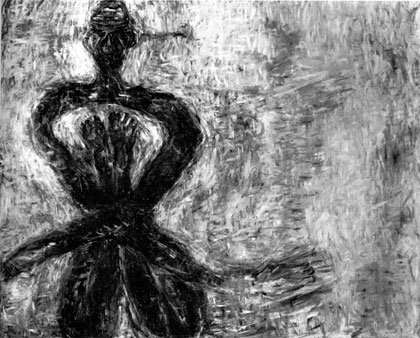In 1254 the Franciscan friar William of Rubruck, a missionary in Mongolia, became the first Westerner to describe a reincarnate Buddhist teacher. In the report of his mission to King Louis IX of France he recounted the following episode:
A boy was brought from Cataia [China], who to judge by his physical size was not three years old, yet was fully capable of rational thought: he said of himself that he was in his third incarnation, and he knew how to read and write. (Peter Jackson’s The Mission Friar of William of Rubruck, Hakluyt Society, 1990.)
Seven hundred and thirty years later, the same phenomenon was reported in the heartland of Christian Europe:
On February 12th, 1985, in the State Hospital of Granada, Spain, Osel Hita Torres was born. He came into the world without causing his mother any pain, his eyes wide open. He didn’t cry. The atmosphere in the delivery room was charged—very quiet and yet momentous. The hospital staff was unusually touched. They sensed that this was a special child.
This passage from Vicki Mackenzie’s book, Reincarnation: The Boy Lama (Bloomsbury, 1989), describes the birth of a young boy who was shortly to be recognized by the Dalai Lama as the reincarnation of Lama Thubten Yeshe, a charismatic teacher and founder of numerous Tibetan Buddhist centers throughout Europe, Australia, and America, who had died in Los Angeles eleven months earlier of heart failure at the age of forty-nine.
Following the traditional ways of determining a future rebirth, Lama Thubten Zopa, Lama Yeshe’s principal disciple, began examining his dreams and consulting oracles for signs that might indicate the whereabouts of his teacher. In one dream he beheld “a small child with bright, penetrating eyes, crawling on the floor of a meditation room. He was male and a Westerner.” Shortly afterward, he visited Osel Ling, a meditation center that Lama Yeshe had founded in Spain, and there, crawling on the monastery floor, was the very same child. According to Mackenzie, the fourteen-month-old boy was then subjected to a number of traditional tests to determine whether he was in fact Lama Yeshe.
Lama Zopa sought out some of Lama Yeshe’s possessions, mixed them with others of similar type, and asked Osel to pick out those that were rightfully his. He started with a rosary, a fairly ordinary wooden beaded one, a favorite of Lama (Yeshe)’s, which he placed on a low table along with four others almost identical in style and one made of bright crystal beads which he thought would act as a natural red herring. Then, with Maria (the mother) and a few Western disciples as witnesses, he commanded Osel, “Give me your mala (rosary) from your past life.” Osel turned his head away as if bored. Then he whipped it back again and without hesitation went straight for the correct mala, which he grabbed with both hands, raising it above his head, grinning in a triumphant victory smile.
In December 1990, I had the opportunity to meet the five-year-old Lama Osel, as he is now known, in a Buddhist center in Finsbury Park, London. He was a fair, attractive child, dressed in miniature Tibetan robes. For our meeting he sat cross-legged on a bed, looking down at myself and Roger Wheeler, a former student of Lama Yeshe’s (we were seated on the floor). After introducing ourselves, Roger said, “I studied with Lama Yeshe and Lama Zopa at Kopan (in Nepal).
Lama Osel eagerly replied: “Before, I was Lama Yeshe.”
“You remember that well, do you?” I asked.
“Not all,” said Lama Osel.
“What do you remember?”
“When I was very sick they put me in the fire….”
“What was it like being put in the fire?”
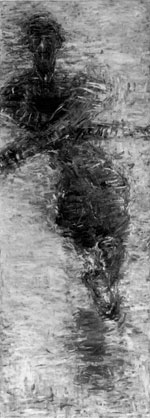
“Very hot. I couldn’t see I was Lama Yeshe when they put me in the fire. I didn’t see because I was in a stupa. In a photo, they put me into a fire like this—I saw. In one little hole, like this, then zzp!, they put here fire. All burn. I saw in photo that it was like a monster. Eyes like this all red.”
Although we tried, he did not respond to our further questions about his past life, instead, he talked about what he had been doing in the previous weeks and months.
What impressed me most about the young boy was the calm and dignified way in which he carried himself. Although sometimes he would behave just like any other child of his age, as soon as he had to function as Lama Osel he displayed a maturity that seemed far in advance of his physical age—an impression similar to that of the boy described by William of Rubruck. That afternoon an hour-long ritual was offered by the center for Lama Osel’s long life. He was placed on a throne about six feet high, wearing a pointed Tibetan hat and saffron robes. His high child’s voice led the chanting in Tibetan and he stayed completely composed to the very end without looking bored, neither fidgeting nor looking around distractedly—certainly not the kind of behavior I would have expected from a five-year-old.
Yet being around Lama Osel raised far more questions than it answered. The basic enigma that preoccupied me as I came away was quite simply: What on earth is going on here? The most straightforward answer would have been that what was going on was precisely what was claimed to be going on: that this five-year-old Spanish boy called Osel was the reincarnation of a Tibetan lama called Thubten Yeshe.
In support of this possibility is the fact that most religions assert the continuity of life after death in one form or another. In some, such as Hinduism or Buddhism, it is very specific: one is reborn in a form that corresponds to the kind of ethical or unethical actions (karma) that have been committed either in this or a previous life. In the monotheistic religions of the Middle East and Europe, the range of options is usually limited to either heaven or hell. The indigenous Chinese religion of Taoism does not have such a strong sense of individual identity, nevertheless some form of afterlife is suggested. A longstanding popular belief in Europe and America, moreover, posits an “other side” from which the intact personality of this existence is able, through the agency of mediums, to communicate with friends and relatives on “this side.” Religious and spiritual traditions throughout history have explained that death is not the end of life but that some part of us, perhaps all of us, somehow carries on.
Buddhism is no exception to this. It is undeniable that the historical Buddha accepted the idea of rebirth. He spoke of rebirth and frequently described, sometimes in considerable detail, how actions committed in this life determine the form of existence in a future world. He also spoke of enlightenment in terms of how many times one must be reborn before one will be freed from the cycle of birth and death. Although there are instances in his discourses (the Kalamasutta, for example) where he says that the practice of dharma is meaningful, whether you believe in a hereafter or not, the overwhelming mass of evidence does not suggest that he held an agnostic position himself.
On the basis of such authoritative statements, Buddhists of all traditions have used the concept of rebirth to make sense of the process of spiritual liberation and to provide an explanation’ of what carries the all-important imprints of karma that drive the cycle of birth and death itself. An action is judged to be right or wrong in terms of the kind of karmic consequences it will reap in the future—both in this life and after death. “After you die,” declares the Tibetan lama Pabongka Rinpoche, “your consciousness does not end: it must definitely take rebirth, on the upper or the lower realms.”
In addition to these views about karma and rebirth, Tibetan Buddhists adhere to the Mahayana doctrine of bodhisattvas (beings who dedicate their lives to the enlightenment not only of themselves but of all others). Bodhisattvas strive to replace the force of karma with that of bodhicitta, the altruistic resolve to continue taking birth as long as there are living beings in the world that need to be saved from suffering. According to Mahayana Buddhism, at any one time numerous bodhisattvas are taking birth to help other beings in whatever ways are required.
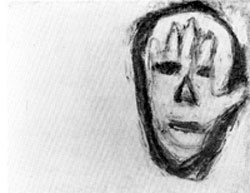
Tibetans also accept the theory and practice of Tantric Buddhism, which gives detailed instruction on how to control those psychic energies and subtle levels of consciousness that are attained through yogic disciplines. By utilizing energies and consciousness, it is believed that one can direct one’s future rebirth to a specific place. In Tibet, this form of Buddhism became the prevailing ideology of the land.
The lamas of Tibet were political as well as spiritual leaders. As celibate monks, the lamas had no natural heirs to assume their mantles after death, but as Tantric Buddhists they could, for the benefit of others, direct their own consciousness to a suitable womb and ensure continuity of authority both within their monastery and over their political domains for many successive lifetimes. The best-known examples are figures such as the Dalai Lama, the Panchen Lama, and the Karmapa, all of whom wielded considerable political power across the whole country. For the method to work, it presupposes that their disciples have the skills to rediscover them in their new incarnation. This involves divination, oracular consultation, dream analysis, and so on. Only after having thoroughly tested the child and satisfied themselves that the boy (in one case the girl) is in fact the lama, will the child be officially enthroned. He will then be brought up under the finest tutorial care his disciples can offer, until he reaches the age of about twenty, at which time he will be reinvested with his full temporal and spiritual power. When he dies the process is repeated. Some of these lines are now in their twentieth or thirtieth incarnations.
While all religions believe that life continues in some form after death, that does not prove that the claim is true. Until quite recently most religions believed that the earth was flat, but such widespread belief had little effect on the shape of the planet. Even though the Buddha accepted the idea of rebirth, one could argue that he simply reflected the ideologies of his time. Long before the Buddha, India had developed a cosmology which included the ideas of karma, rebirth, and liberation. (A curious twist here is that Westerners often find the idea of rebirth rather attractive, whereas in Buddhist terms, liberation or nirvana means freedom from the endless round of birth and death.) These ideas were taken for granted, just as we take for granted many scientific views, which, if pressed, we would find hard to prove.
Whether he really believed in it or not, the Buddha found the prevailing worldview of his time sufficient as a basis for his ethical system. It also provided an adequate set of metaphors for his doctrine of transcendence. His main concern, however, was not whether there is or is not life after death, but whether it is possible to live in such a way that one could transcend the dilemma of suffering.
Many contemporary forms of Buddhism in the West—especially Zen and vipassana—seem to pay little attention to the doctrine of rebirth, emphasizing instead the importance of living more fully and authentically in the present. Teachers in these traditions often use the idea of rebirth metaphorically to describe the moment-to-moment process of “dying” and being “reborn.” However appealing, psychologically astute, and didactically skillful such interpretations may be, they can give rise to the misleading impression that in traditional Zen or Theravadan cultures the doctrine of rebirth is likewise not taken literally. Not only is belief in rebirth firmly adhered to in all Buddhist countries, from Japan to Sri Lanka, but—especially in East Asia—it has become the very basis for the livelihood of the majority of monks and nuns. A typical Zen temple in Korea or Japan spends far more time offering services to assist departed parishioners on their way to a better rebirth than on instructing the living in zazen.
Institutionalized Buddhism throughout Asia not only has a doctrinal commitment to rebirth but also an economic and political one. In contrast to most Tibetan lamas, for whom the belief in the doctrine of rebirth is essential to the continuing authority of their institutions in exile, other Asian Buddhists in the West have felt freer to adapt their teachings to suit the needs of a secular and skeptical audience whose interest in the dharma is as a way of finding meaning here and now rather than after death. One will search in vain for any discussion of rebirth in the numerous writings of Thich Nhat Hanh, for example. Although he comes from a country (Vietnam) in which the belief is deeply rooted, he now seems to be moving toward a view that equates karma with some form of genetic inheritance and transmission.
A concern often voiced by traditional Buddhist teachers is that denial of rebirth undermines the basis of karmic continuity and hence the need for morality. Similar fears were expressed at the time of the European Enlightenment in the seventeenth century by the Christian churches, who believed that loss of faith in the doctrines of heavenly reward and hellish punishment would likewise lead to rampant immorality. One of the most lasting and powerful realizations of the Enlightenment was that an atheistic materialist could be just as moral a person as a believer, and maybe even more so. This insight in the West led to a tremendous liberation from ecclesiastical dogma and was crucial in forming that vital sense of individual liberty which today we take for granted. It also might explain why for so many Western Buddhists the notion of karma as a nontheistic version of punishments and rewards is felt at a gut level to be an inadequate and unconvincing basis for ethical conduct.
I do not believe, as is sometimes claimed, that the teaching of the Buddha stands or falls on the doctrine of rebirth, and that one cannot really be a Buddhist if one does not accept it. Theologically, or “Buddhologically,” it is indeed problematic to do away with the doctrine of rebirth, for numerous other basic ideas would then have to be rethought. But if liberation is the “taste” of the dharma, as the Buddha said, then for its sake one should at least be prepared to put up with the unappetizing flavor of doctrinal inconsistency. Another problem, which has also beset traditional Buddhists, is the question of what it is that is reborn. Religions that posit an eternal soul that is essentially distinct from the body/mind complex escape this dilemma—the body may die but the soul continues to exist. One of the central Buddhist doctrines, however, is that of non-self (anatman): the denial of any intrinsic identity or soul or self that can either be found through analysis or mystically realized in meditation. The doctrine teaches that the notion of such a deep-seated, independently existing personal identity is a fiction, a tragic habit into which we have become locked since “beginningless time.” In order to free oneself from suffering, one needs first and foremost to free oneself from clinging to such a notion of self identity. But how does one square this with the idea of rebirth, of something distinct from that which dies but which is somehow reborn and so passes from life to life?
To answer this question, more or less every Buddhist school has come up with a different explanation—a fact that in itself suggests that their answers are based on speculation. Most schools claim that what is reborn is some kind of consciousness. Some say that this is simply the sixth sense (manovijnana); others propose the existence of a foundation consciousness (alayavijnana); the Tantric traditions talk of a combination of extremely subtle energy and mind. But as soon as one hypothesizes the presence of some kind of subtle stuff, no matter how sophisticated the technical term one invents to denote it, one has already reintroduced the notion of some kind of esoteric self-substance.
For the Prasangika-Madhyamika school of Buddhist philosophy, whose seventh- and eighth-century Indian proponents are often regarded as having taken the deconstructive logic of Nagarjuna as far as it can go, adherence to any kind of reified self or substance, no matter how subtle, is essentially in contradiction to enlightenment and liberation. Having rejected all concepts of some esoteric stuff that sneaks across from one birth to the next, the most one can legitimately say is: “I do.” Any further elaboration of this “I” will inevitably lead into reification. In his Guide to the Bodhisattva’s Way of Life (VIII: 98), the eighth-century Madhyamika poet Shantideva pushes the idea even further:
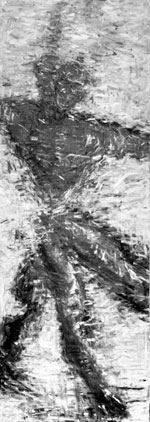
It is a misconception to think
That I shall experience (suffering in a future life),
For it is another who will die
And another who will be born.
The sheer momentum of the actions I conventionally consider as “mine” will generate forms of life as different from myself now as you are different from me now. Thus, for Shantideva it is not only of lesser ethical value but actually meaningless to act out of concern for one’s own welfare after death. The ethics of karma are thus turned on their head: the only meaningful motive for action can be compassion for others.
Several centuries after the historical Buddha, Buddhist philosophers became involved in all manner of controversies with other schools of Indian thought, some of which had a materialist outlook and denied the idea of rebirth. At this point “proofs” were devised to convince nonbelievers of the truth of rebirth. These are examined with great clarity in Martin Willson’s excellent book, Rebirth and the Western Buddhist (Wisdom, 1984), in which he shows that none of the arguments hold (while still insisting that the doctrine of rebirth is essential to Buddhism). The “proofs” rest on the assumption that any moment of consciousness must be preceded by a previous moment of consciousness and that it is impossible for something material (like a brain) to produce something immaterial (like a thought). Thus one classical argument runs: “The mind of a child that has just been conceived must have existed previously, because it is a mind.” This may convince a hypothetical Buddhist meditator who has directly experienced how consciousness in its nature arises from consciousness, but it carries little weight with a modern Westerner who is unclear as to whether or not consciousness is an epiphenomenon of the brain.
But even if such “scientific proof” should appear, it would only lead to further problems. Many Buddhists would doubtless rejoice at this vindication of their beliefs, but the fact of rebirth in itself does not lead to any linkage between one existence and the next. Just to prove that death will be followed by another life in no way indicates that a murderer will be reborn in hell, whereas a saint will go to heaven. The doctrine of rebirth is meaningful in Buddhism only insofar as it provides a basis for the continuity of ethical consequences. Although rebirth and karma are often linked together, it is karma that is of primary importance; rebirth is secondary.
Even if research into the cases of young children who claim to remember their previous lives, or of people who recall them through hypnotic regression, should lead to certainty about these people having been reborn, this in itself would not furnish any proof whatsoever either that they themselves would experience rebirth again or that anyone else was reborn in the past or will be in the future. The most such research can do is suggest the possibility of rebirth. A plausible theory of two-or-three lifetime cycles could be posited (as it was in fact by some materialist Indian schools), after which the rebirth process would cease. Research into individual cases may be consoling to rebirth advocates, but to draw the inductive conclusion that rebirth is therefore a fact of life is unwarranted.
Another kind of evidence that is often cited to “prove” that there is life after death is that of people’s reports of near-death experiences (NDEs). The difficulty here is that a near-death experience is, by definition, not a death experience. One does not return from death to talk about it; rather, it is the end of life; the very term “near-death” itself makes this crucial distinction. Although NDEs might give some indications of what will happen at death, they are not reports from beyond the grave.
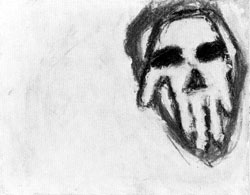
Westerners who have had such experiences tend to draw extremely optimistic conclusions from them, claiming that they have now lost any fear of dying. Their whole attitude toward life is sometimes completely transformed. But I wonder how much these experiences feed a basic yearning for consolation in a post-Christian culture: a longing for a heaven that has been repudiated. Tibetan Buddhists, for example, would have no difficulty accepting the existence of such experiences but, given their different worldview, would be unlikely to interpret them in an optimistic way. The accounts of NDEs are similar to the descriptions of the initial stages of death in such writings as the Tibetan Book of the Dead. The difference is that, according to the Tibetans, the initial beatific visions of radiant light and so on are, for most unenlightened people, the calm before the storm. The so-called “Clear Light” is the point at which one touches the very ground of one’s being. But once the patterns of karma begin to reassert themselves, one is expelled from this peaceful repose into a nightmarish series of visions that serve as the conduit to the next suffering-laced womb. Many of the Tantric teachings of Tibetan Buddhism are concerned with preparing oneself to utilize the experience of death to transform fundamentally one’s way of being in the world. If a Tibetan Buddhist were to have a near-death experience, he or she would have no difficulty in fitting it into their world view; but it is unimaginable that they would interpret it as an indication that death is no longer something to fear but the gateway to eternal life. At best it would reinforce their resolve to prepare themselves through Tantric practice for the Clear Light experience.
Now let us go back to the case of young Lama Osel and his predecessor. Although one hypothesis to explain his appearance in Lama Zopa’s dream, and his choice of the right rosary, is that he is the reincarnation of Lama Thubten Yeshe, could we not conceive of an alternative hypothesis that would be no less problematic than the theory of rebirth? One has to remember the environment in which Lama Osel has been brought up. From a very early age he has been immersed in images of Lama Yeshe and the world of Tibetan Buddhism (like the photo he referred to in the interview), subjected to high-profile media attention because of his having been identified as a tulku, and surrounded by people with a high investment in believing that he is the reincarnation of their teacher. Let us imagine that the child is simply responding to the expectations of the adults around him. He already knows that when he makes certain gestures or speaks in a certain tone of voice, those who care for him will exclaim with joy, “Oh, that’s just like Lama Yeshe!” So when this sensitive child is confronted with a range of rosaries, could he not simply be responding to the hopes and expectations of his audience—none of whom are indifferent to the outcome? One wonders if the same tests were run under laboratory conditions in the presence of neutral observers whether the results would be the same. Whether or not one accepts such a possibility—that a young child can “read” the expectations of those around him—is such a theory any more or less credible than that of rebirth? As for his “remembering” his former incarnation, it would seem quite possible to explain this in a similar way, namely that he is simply telling the adults around him what he thinks they want to hear. This is not to deny the possibility of rebirth in this case, but to show that the same phenomena can be explained by other hypotheses every bit as plausible.
Where does this leave us? Are we any clearer as to what is going on? Having looked at the traditional Buddhist account of rebirth and having reflected on some of the difficulties it presents, where does one stand? It is often felt that there are two options: one can either believe in rebirth or not believe in it. But there is a third alternative: that of agnosticism—to acknowledge in all honesty that one does not know. One does not have either to assert it or to deny it; one neither has to adopt the literal versions presented by tradition nor fall into the other extreme of believing that death is a final annihilation. This, I feel, could provide a good Buddhist “middle way” for approaching the issue today.
How can one know about something which presupposes the absence of the very apparatus that does such knowing (the psychophysical complex of body and mind)? Whatever I say about what happens to me after death is inevitably said from the standpoint of that which will cease at death. No matter how philosophically cogent, Buddhologically sound, aesthetically appealing, or psychologically astute it may be, whatever theory I propose will be limited by the senses, language, brain activity, and consciousness of a finite being (myself) who cannot conceive of anything outside the aforementioned senses, language, brain activity, and consciousness. The traditional Buddhist “doctrine of the Six Realms of Existence (gods, titans, humans, animals, ghosts, and hell-denizens),” which are considered the only possible options for rebirth, betrays the necessary anthropomorphism of such a belief. All these realms (except that of the animals) are imaginative extensions of aspects of the human situation. It is impossible to imagine, for example, a seventh-sense faculty, let alone the kinds of consciousness more complex brains would make possible. Yet death, as the disintegration of the senses and the brain we now possess, surely must open up the possibility of a potentially infinite variety of forms of existence (and even the possibility of something beyond the very ideas of existence and nonexistence).
An agnostic position toward death seems more compatible with an authentic spiritual attitude. In many cases we find ourselves drawn to doctrines such as rebirth not out of a genuine existential insight or concern, but rather out of a need for consolation. At the level of popular religion, Buddhism, as much as any other tradition, has provided such consolation. Yet, if we take an agnostic position, we will find ourselves facing death as a moment of our existential encounter with life. The fundamental spiritual confrontation of human life involves the realization that we have been thrown into this world, without any choice, only to look forward to the prospect of being expelled at death. The sheer sense of bafflement and perplexity at this situation is crucial to spiritual awareness. To opt for a comforting, even a discomforting, explanation of what brought us here or what awaits us after death severely limits that very rare sense of mystery with which religion is essentially concerned. We thereby obscure with consoling man-made concepts that which most deeply terrifies and fascinates us.
Nonetheless, among otherwise critical and discerning practitioners of the dharma, the subject of rebirth is often treated as out of bounds for honest and penetrating inquiry. While Tibetan Buddhists tend dogmatically to assert it, practitioners of Zen and vipassana tend either to overlook it or explain it away as a metaphor. Both these attitudes can equally serve to sidestep the awesome encounter with the “Great Matter of Birth and Death.” Failure to summon forth the courage to risk a nondogmatic and non-evasive stance on this central issue is also liable to blur one’s ethical vision. For if my actions in the world are to stem from an authentic encounter with what is most vital and mysterious in life, then they surely need to be unclouded by either dogma or prevarication. A truly agnostic position is not an excuse for indecision. If anything, it is a powerful catalyst for action; since in shifting concern away from a hypothetical future life to the dilemmas of the present, it demands precisely the kind of compassion-centered ethic advocated by Shantideva.
A genuine spiritual attitude implies the courage to confront what it means to be human. All the pictures I entertain of heaven and hell, or cycles of rebirth, merely serve to replace the overwhelming reality of the unknown with what is known and acceptable. In this sense, to cling to the idea of rebirth, rather than treating it as a useful symbol or hypothesis, can be spiritually suffocating. If we are to take Buddhism as an ongoing existential encounter with our life here and now, then we will only gain by releasing our grip on such notions.
Thank you for subscribing to Tricycle! As a nonprofit, we depend on readers like you to keep Buddhist teachings and practices widely available.
